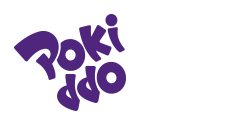How to Evaluate an Indoor Playground Design
How to Evaluate an Indoor Playground Design
A well-designed indoor playground is more than just a collection of attractions—it’s a carefully planned experience that balances fun, safety, and profitability. Whether you're an investor, operator, or designer, understanding the key elements of a successful indoor playground will help you create a space that captivates visitors and maximizes returns. Below, we break down the essential factors to consider when evaluating an indoor playground design.

1. The Importance of Pre-Design Research
A great design starts with thorough research. Without accurate data, even the most creative concepts can fail in execution.
A great design starts with thorough research. Without accurate data, even the most creative concepts can fail in execution.
1.1 Site Information Accuracy
Precision is key: The design must account for exact spatial details (layout, fire safety systems, ceiling height, mall location, etc.). Copying blueprints without verifying differences—especially between international projects—can lead to costly mismatches.
1.2 Market & Competitive Analysis
Population & demand: A basic rule of thumb—200,000 people in China or 20,000 abroad may support a viable location.
Competitor benchmarking: Study rival venues (size, ticket pricing, operational history, profitability) to avoid market saturation and ensure differentiation.
1.3 Defining the Vision
Clear reference points: Align with the client’s expectations by discussing case studies or desired attractions upfront.


2. Clear Positioning is Critical
A strong design must answer three fundamental questions:
2.1 Who is the Target Audience?
Age-specific focus: Is the playground tailored for toddlers (2-6), kids (5-15), or teens/adults? Mixed-age venues must carefully segment zones to avoid functional conflicts.
2.2 What is the Theme & Experience?
Theme integration: Does the design align with the core concept (adventure, sports, entertainment, etc.)? Hybrid themes (e.g., "sports + entertainment") can enhance uniqueness.
2.3 How Will It Generate Revenue?
Multi-stream profitability: Beyond entry tickets, does the space support parties, F&B, arcades, or membership systems? Smart zoning (e.g., pay-per-ride sections) can boost income.


3. Design for Operational Efficiency
A brilliant design should minimize labor costs, attract crowds, and ensure seamless guest experiences.
3.1 Maximizing Staff Efficiency
Labor-saving layouts: Consolidate high-attention areas (e.g., grouping aerial attractions to reduce safety staff) and optimize entry flows (e.g., self-check-in kiosks). This is crucial in high-wage regions (e.g., U.S. hourly rates).
3.2 Boosting Marketing & Foot Traffic
-Unique selling points (USPs): Does the design feature must-try attractions absent in local competitors? (Example: A signature slide in Hangzhou.)
-Instagram-worthy entrance: The main entry should showcase dynamic play elements (climbing, sliding, jumping) to trigger social sharing and impulse visits.
-Peak-capacity planning: With weekends driving profits, calculate space efficiency (e.g., ~3 sqm/person) to handle crowds without congestion.
3.3 Ensuring an Outstanding Guest Experience
① Safety First
Emergency readiness: Check exit routes, safe spacing (e.g., trampoline net heights, foam pit depth), and structural limits (e.g., soft play tower levels).
② High Play Value
Density of attractions: More activities per sqm = higher perceived value. (Example: Our 1,000 sqm India project packs 64 play features.)
③ Comfort & Flow
- Smart zoning: Separate active/noisy areas from calm ones.
- Aesthetic harmony: Colors and lighting should feel inviting, not overwhelming.

A successful indoor playground blends data-driven planning, creative storytelling, and operational savvy. By focusing on market needs, clear positioning, and visitor satisfaction, your design won't just look impressive—it’ll perform brilliantly.
Ready to design a standout indoor playground? Let's turn your vision into a thriving attraction!
Contact us for a consultation today!

